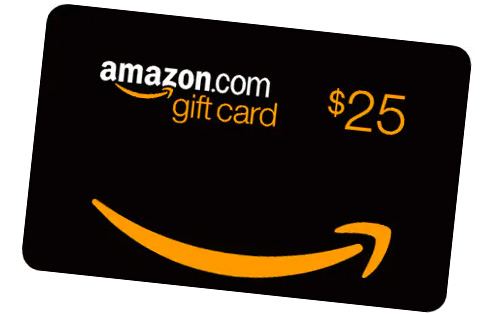Want To Find At Least $500 You Didn't Know You Have?
Enter Your Name & Email Below.
Your mortgage, home ownership, debts, income, investments, property, children and future plans are not separate topics …
at CleveDoesMore we consider them to be crucially interconnected parts of your overall financial life.
Let’s Fix the
Snow Problem for Good
With the autumn season in full swing, and the winter months just around the corner, the blustery single degree temps of this last week have me thinking about snow. In all of my years of dealing with people, I have decided that there are two camps of preference in this area. There are those who love the snow, and those that do not. No matter which side of the debate you find yourself on, I hope you enjoy this frosty riddle!

Pretty confident of your answer? Let us know your answer below, and submitting your response at the very end. Be sure to enter your name & contact info and if you got the correct answer, you will be entered in a random drawing for a chance to win a $25 Amazon gift card

Speaking of snow, I wanted to take a little time to talk to you this month about something called the snowball debt reduction practice. If you have ever searched or read much about strategies for getting out of debt or quickly reducing your debt, then you likely know what I am talking about.
The general concept is that you pay off your smallest debt as quickly as possible, and then allocate that old debt payment amount to pay down your next smallest debt faster. You continue this practice until you have no more debts to pay off, as each debt paid off creates a larger “snowball” payment to add to the next debt in line.
But is this really the best way?
While many like the idea of “snowballing” your payments to pay off debt quickly, there is one major problem with the traditional debt snowball payment method…it doesn’t take into account the interest rates of the debt! For example, if a person’s smallest debt is a low interest rate loan, but they have a larger credit card debt accruing a much higher rate of interest monthly, it makes a whole lot more sense to pay off the credit card debt first, not the other! The truth is, this fact based approach to payoff your debt is the fastest and will ensure that you stop pumping your hard earned dollars into banks who really don’t need it.
Case Studies
So let’s look at two real life client financial situations and see which ends better for each.
Jessica is a recent college graduate who just settled into a great new job. She has a mortgage and two credit cards to tackle. Her lowest owed balance is the Visa card ($5,000), but she signed up for it during a promotion so the interest rate is only 12%. Her other credit card balance is the next largest ($10,000), but it has a staggering 24% interest rate attached to it. Finally, her mortgage loan has the largest balance ($350,000), but carries the lowest interest rate, at about 3%. Here is her financial scenario in spreadsheet format:

James’ financial profile begins exactly the same as Jessica’s, even though he is at a different life stage. James also has made the wise choice to discuss his debt reduction strategy with CleveDoesMore, where he learns that he should pay the highest interest rate debt first, not the one with the lowest balance first. Here is James’ beginning financial scenario spreadsheet:

Jessica & James both locate an extra $200 a month that they can use to paydown debt with, above their normal minimum payments. Jessica takes the advice of a local bank, and starts her payoff with the Visa card, as it is the lowest balance. James follows the strategy that Cleve has routed for him, and begins adding his extra $200 a month to the Master Card, since it carries the highest interest rate.
Jessica’s Visa debt is paid off, as planned, and her $1,548 savings are outlined below:

James also completely pays off his first debt, the Master Card, but his savings are significantly higher than Jessica’s at $12,779! Here are James’ numbers:

As you can see, choosing to pay off the highest interest rate debt was the best choice, and saved the most money in the long run. James was sure happy that he consulted with CleveDoesMore before starting his debt reduction plan!
While every person’s situation will vary, it is important to look at more factors than just the balance when deciding what order to snowball your debt payments in. Interest rate is the most important thing to consider, as well as other factors like tax deductibility.
This is where making a quick call to CleveDoesMore can help you get a winning strategy in place. Our $500 Fix will not only help you decide what strategy and order is best to begin paying off your debt, but also help you locate money you didn’t even know you have to allocate to paying off debt even faster.
Start your $500 Fix Now!
While it may seem overwhelming or complicated to get out of debt, here are five steps that you can use to get started:
- Review your cashflow to find extra money to pay on debt. Don’t think you have any extra, let us look for you with the $500 Fix!
- Contact lenders and creditors to renegotiate interest rates
- Order your debt payoffs from highest to lowest interest rate
- Pay your extra on the highest interest rate debt until it is fully paid off, while you keep paying only the minimum on all other debts
5. Buy only the items that you can pay for at the end of the month, so you don’t add any new debt to your credit cards.
Quick tip – If managing your credit card spending is a struggle, put the credit cards in your freezer so you will not use them!
Now, let’s get back to the brain teaser question, presented at the beginning of our Wealth Building newsletter!
Solved the riddle? Enter your answer below.


© Copyright 2018 Cleve DeSouza, Matrix Mortgage Global, Brokerage Lic# 11108